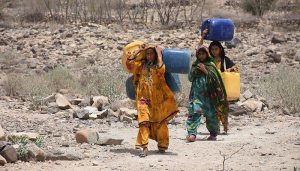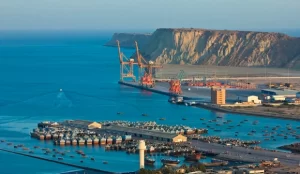Water Management for Balochistan
The News, July 24, 2022
Balochistan’s water crisis has meached a level where rain is needed everywhere, all the time. Sadly, the annual rainfall is meager. On the other hand, there is little preparedness for it. Every time it rains, flooding damage affects lives and livelihoods, particularly in the agriculture. All this was on display last week when it rained in most parts of Balochistan.
In Pishin district, the rain storm caused a number of families to migrate to higher points under an open sky. Water entered the living quarters in many areas. People in the Malakyar village had to flee their homes during the night. Many families migrated to urban regions and started living with their relatives in the host cities.
A few weeks ago, videos of some female students at Loralai Medical College went viral on social media. They were carrying pots of water. They travelled great distances from their hostels and fetched water for themselves. The students have been deprived of safe drinking water. For a long time, the people of Gwadar have not had sufficient water. On several occasions they have been forced to hold street protests.
Quetta, the capital of Balochistan, is over-populated. Families that hail from quite far-flung regions (both Pashtuns and Baloch) also reside in the capital. It is mostly because unlike their ancestral villages their children have access to basic healthcare and schools. The large population needs water. However, the water supply is not sufficient. Water tankers charge around Rs 10,000 per fill. Over the years, an entire water economy has evolved in the city.
In Killa Saifullah, the agriculture has been affected the most by heavy rains. Many shepherds lost their livestock on the eve of Eid-ul-Azha. Some said they had to watch helpless their animals drowned. The already marginalised segment of the society was badly hit economically. Similar stories poured in from other parts of the province. It cannot be claimed, however, that all parts of the province received adequate media coverage.
Potable water scarcity is a serious issue. It causes poverty, illiteracy, stunted growth and security issues. The population of Balochistan is less than the city of Lahore but it is scattered over 48 percent of the land area of the country.
Many people in Balochistan do not have clean water to drink. The water table has gone down nearly a thousand feet in recent years. Installation of solar-powered tubewells, promoted by some politicians, brings only temporary relief.
When it rains, the worries of many citizens are multiplied. Rural regions are affected the most because of the poor design and construction of buildings.
Potable water scarcity is a very serious issue. It causes poverty, illiteracy, stunted growth and security issues. The population of Balochistan, less than that of the city of Lahore, is scattered over 48 percent of land area of the country.
Government policies to solve these issues have not proved compatible with the ground realities. Balochistan does not have enough dams and reservoirs to store rain water. Most of the rainwater is wasted. It flows out quickly and joins the sea, becoming unfit for drinking and other uses.
There is an opportunity for the federal and provincial governments to bring the issue to the table with the Chinese under the CPEC umbrella. The issue must be given priority. The authorities should declare a water emergency. Use of clean water for washing cars etc should be banned.
Balochistan is blessed with minerals and natural resources. It should resolve its water issue by requiring mining companies to provide water for the host communities.
The provincial government should also develop a water trade system with other provinces. In return for the water received Balochistan can provide grapes, apples, melons and watermelons to the rest of the country.
Balochistan is adjacent to Afghanistan which has sufficient water. The government should analyse this option wisely and enter a suitable arrangement with the Afghan government.
The karez system in Balochistan has become extinct. Restoring this system is not viable. A better alternative is small dams to store rainwater.
In the near future, construction and operation of such dams will likely be the best indicator of the health of the economy. It will also be a good yardstick for the sincerity of politicians







